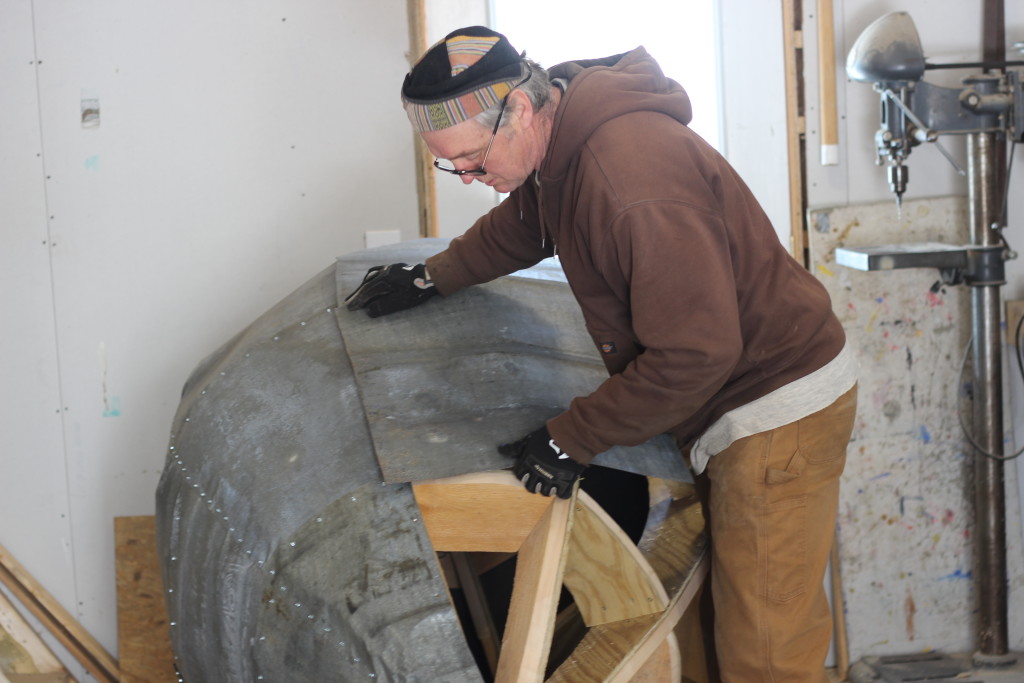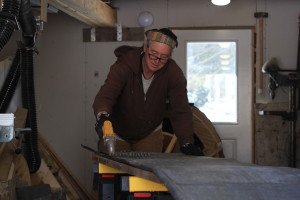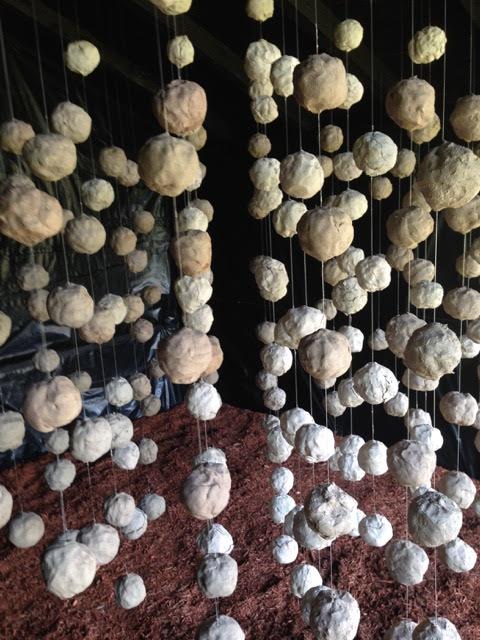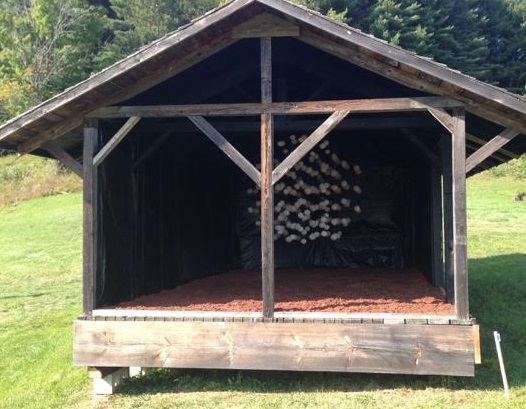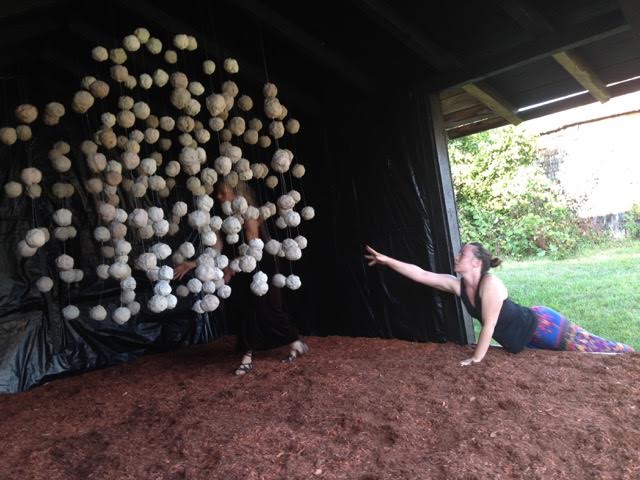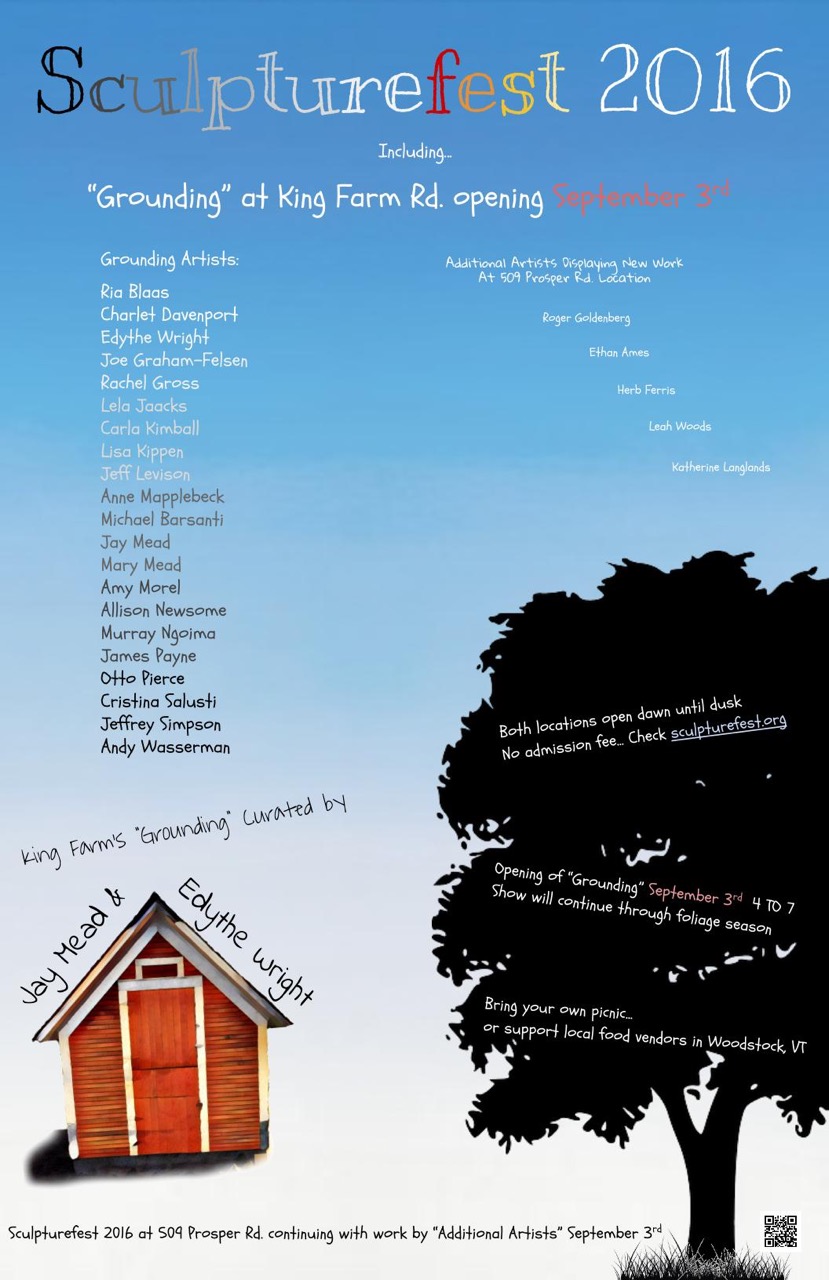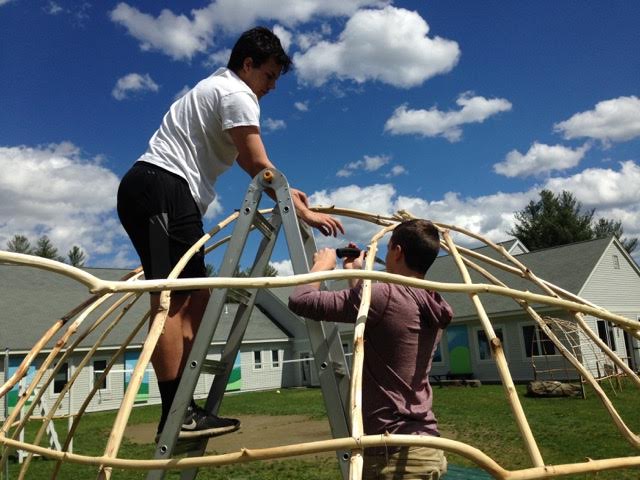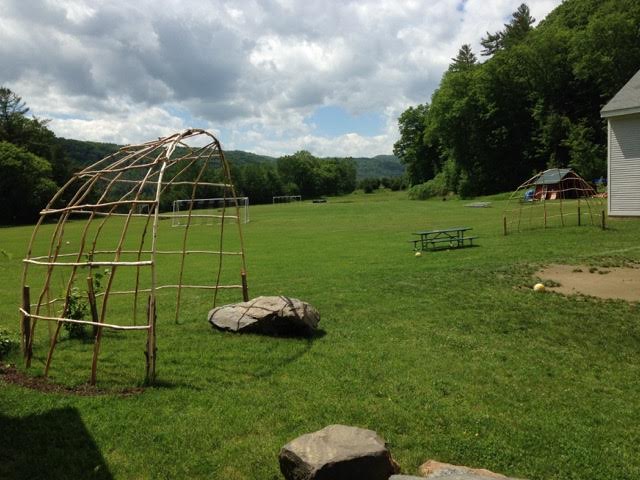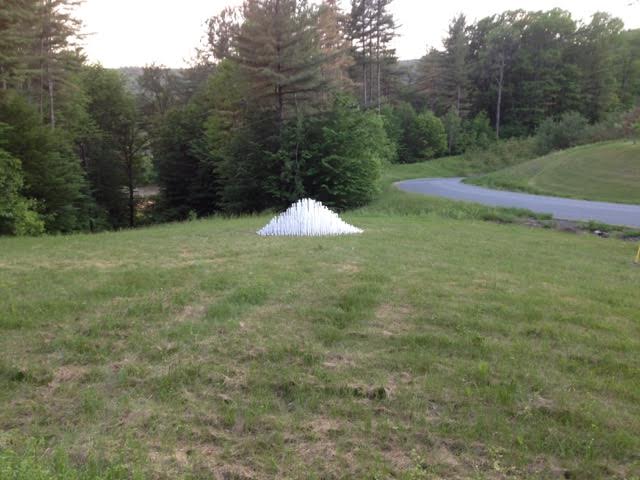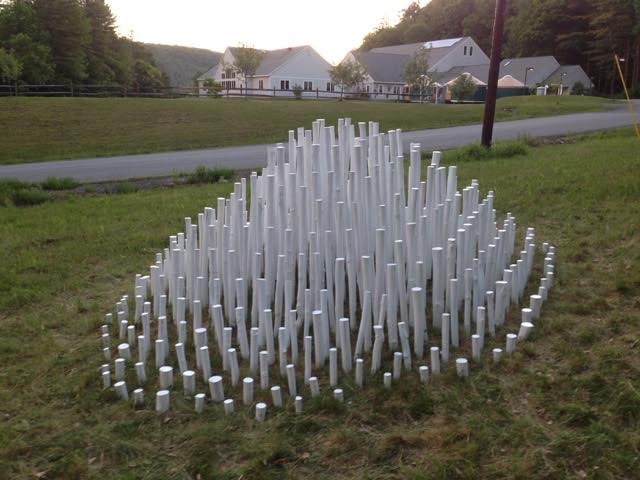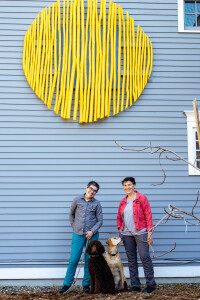
Despite our strange and challenging times, I am finding a way to keep doing the work I am called to do. In June, I was contacted by Laura Foley, to create a piece for her home. Laura is a poet who lives with her partner, Clara, in Pomfret, VT. Laura had seen my piece, “Hot and Cold” at Sculpture Fest and was wondering if I would be up for making a similar piece for her home. I agreed and then made a site visit and discussed the size, color and location of the piece. It turned out that they wanted the piece to be 7 feet in diameter. In addition, I learned that Laura and Clara had walked the Camino de Santiago and felt that this significant experience could be linked by color to this commission. I would replicate the yellow and blue of the route markers, they have a facsimile of one of them at their house. After taking pictures of the house and the route marker, I began to prepare this project.
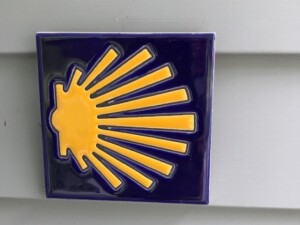
In early July I went up to my friends’ woodlot and cut a bunch of striped (aka “moose”) maple. This tree is considered a weed by most folks as it has no value in terms of lumber or firewood. My friends, Daniel and Creigh, are very happy when I cut these saplings out of their woodlot as I am creating opportunities for other trees to grow. It has been a goal in my art making to find materials that are being cast away or are easily regenerative. I find these saplings beautiful in their slight bending forms.
I selected saplings that are 1-4” in diameter. It’s best to cut these trees from late spring into the summer because sap is flowing through the Cambrian layer of the bark making it easier to peel. I peeled the bark off of these saplings and then let them cure for a couple of months. After this drying period, I cleaned off any branch remnants on my table saw. I then power sanded each sapling. Next I primed and screwed the saplings onto a plywood and 2×4 backing for structural support. Then I set a screw in the center of this assemblage and with a string and sharpie drew a large circle. Using a skill saw, I cut the saplings into the shape of the circle. I then disassembled the structure and labeled each sapling for future assembling. I then started the paint process; over the course of a couple of weeks I applied four coats of paint.
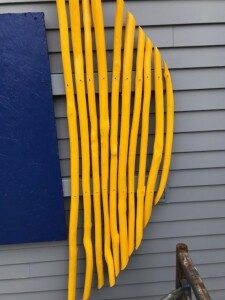
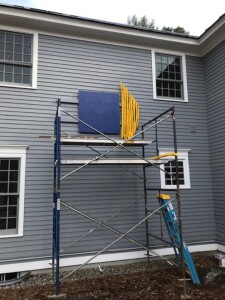
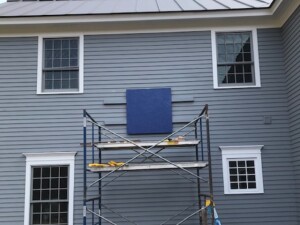
In mid-October I loaded up a COVER truck with staging, tools, paint, and all the pieces of this installation and headed to Pomfret. I set up my staging and found the place on the wall where this piece would reside. I then spent the rest of the day reassembling all the parts and screwing to each other and the wall. Laura and Clara witnessed the transformation of their wall and the only regret was that we did not do a time lapse of the assembling. Laura says “Jay Mead’s piece, entitled The Way, (after the Camino De Santiago), brightens up and energizes our house; its dynamic design and bright yellow and deep blue colors pop out from the grey walls, reminding us every day of beloved Spain, and our amazing 500 mile trek. Our house is no longer generic or banal, but head-turning, unique and exciting, thanks to The Way.”
The Way has a visual vibration to it caused by the repetition and intensity of the yellow 39 saplings set against the grey of the house and the blue of the core square set behind them. The Way continues a simple direction in my work in that it uses an ensemble of multiple pieces to create a unified form.
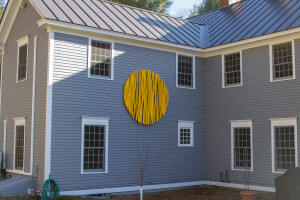
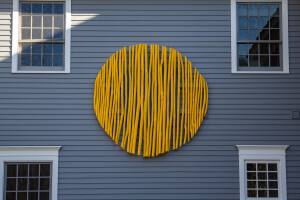
My day job still continues to be with COVER leading crews of volunteers doing essential home repairs and providing safe access to low income homeowners in our area. We have adjusted to Covid protocols and are working hard to restore Hope and Community, these are the main words that describe the mission of COVER.
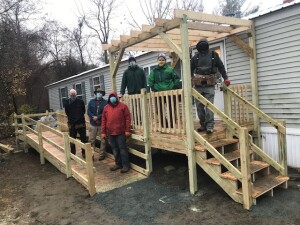
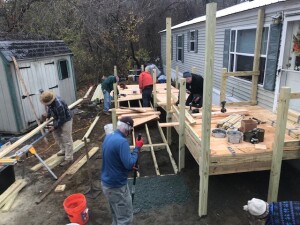
As a response to these anxious times, I am feeling a need to be grounded and invested in something tangible and real, and so I just upped my garlic planting from 800 to 1200 garlic seeds (cloves). I have been selecting the best seed stock from this variety of garlic for over 15 years. Planting garlic is always an act of hope, gratitude, and faith in the future. May we all find ways to plant seeds of hope.

